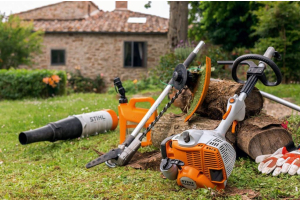Winter Salt – The Ultimate Guide

Slips, trips, and falls on ice and snow are one of the leading causes of serious injury throughout the winter months and, with the A&E waiting times longer than ever, we are doing everything we can to stay safe.
Are you winter ready?
December, January and February are generally the coldest months in Scotland, with the average maximum temperature usually around 5°C (41°F). So, it's a good idea to prepare for the ice and snow with winter salt, shovels and plenty of de-icer!
How do I stop my paths and driveway from being slippery?
The most common method used to de-ice exterior surfaces is applying a light sprinkling of salt or grit, as a preventative measure to stop ice forming or to melt snow or ice which has formed on the surface.
It is most effective to spread salt or grit when frost, ice or snow is in the weather forecast for the next 24hours. In the winter months, its best to spread salt in early evening before it becomes dark or in early morning before snow or ice is compacted. Spreading salt during heavy rain should be avoided as the salt can be washed away.
FACT: Salt will prevent water from freezing until the temperature reaches -6C to -8C.
What is the best grit or salt to use in icy weather?
There are 3 main types of salt & salt mix that are commonly used in winter for keeping roads, paths, and driveways free from icy and snow.
White Salt – White salt is marine salt which is harvested from sustainable sources around the Mediterranean Sea and is 100% sodium chloride, this means every part de-ices the surface. White salt is ideal for domestic properties as it does not leave behind dirty residue which more common with brown salt, also known as grit.
Rock Salt – Rock Salt is a fine grade 6.3mm to BS3247:2011, with a minimum of 90% sodium chloride. This product is mined from within the United Kingdom. Bulk bags are a great value method of buying salt for commercial, industrial or education properties which require regular maintenance throughout the winter months.
Sand & Salt Mix – This 3:1 combination of sharp sand and rock salt is a low cost, highly effective way to grit a large area. Available only in a bulk bag, this product contains locally soured sand and UK sourced rock salt. In extremely low temperatures or heavy snowfall, a sand / salt mix is often used by Local Authorities to improve traction on effected roads.
How much salt should I spread?
Whether you're looking to de-ice your commercial or industrial property, or simply keep your grandma's path ice free this winter, you can use our handy calculator below to work out how much salt you need to keep the ice at bay.
Can I put salt on concrete?
It is important not to spread normal salt on concrete surfaces unless you are sure the concrete is designed to the correct exposure class. Salt has a corrosive effect on concrete when mixed with water and will ‘eat’ the surface of the concrete. This also applies to some concrete paving slabs and natural stone products. Contact GPH to find out more about concrete safe salt.
FACT: Salt is corrosive to most common types of concrete and especially to new concrete.
How should I spread salt?
For small areas, salt can be spread with a shovel or a scoop and thrown in a sideways motion. For larger areas, you can find plenty of options including walk behind spreaders or trailer mounted spreaders.
Can you deliver to me?
Yes, GPH are able to delivery 25kg bags or bulk bags of salt to your site or home across the country.






